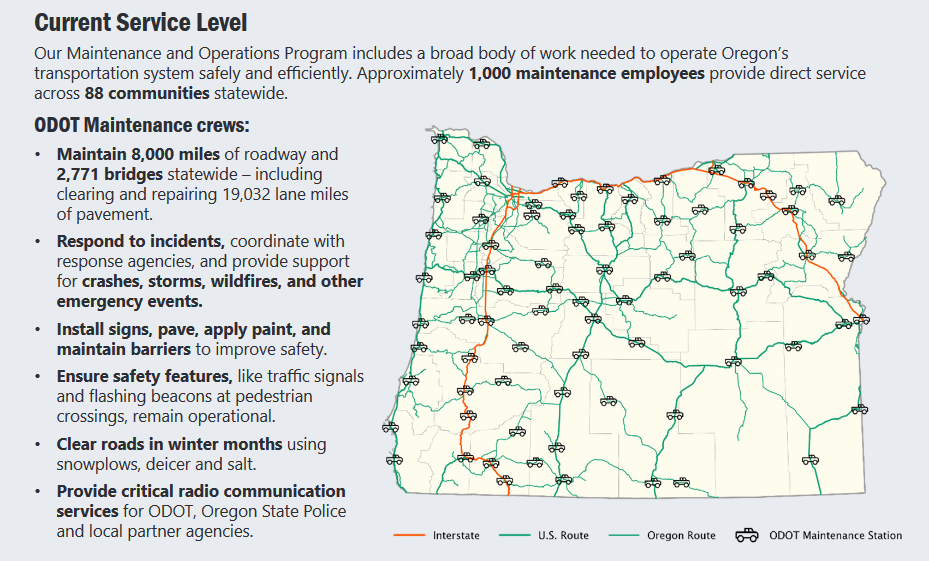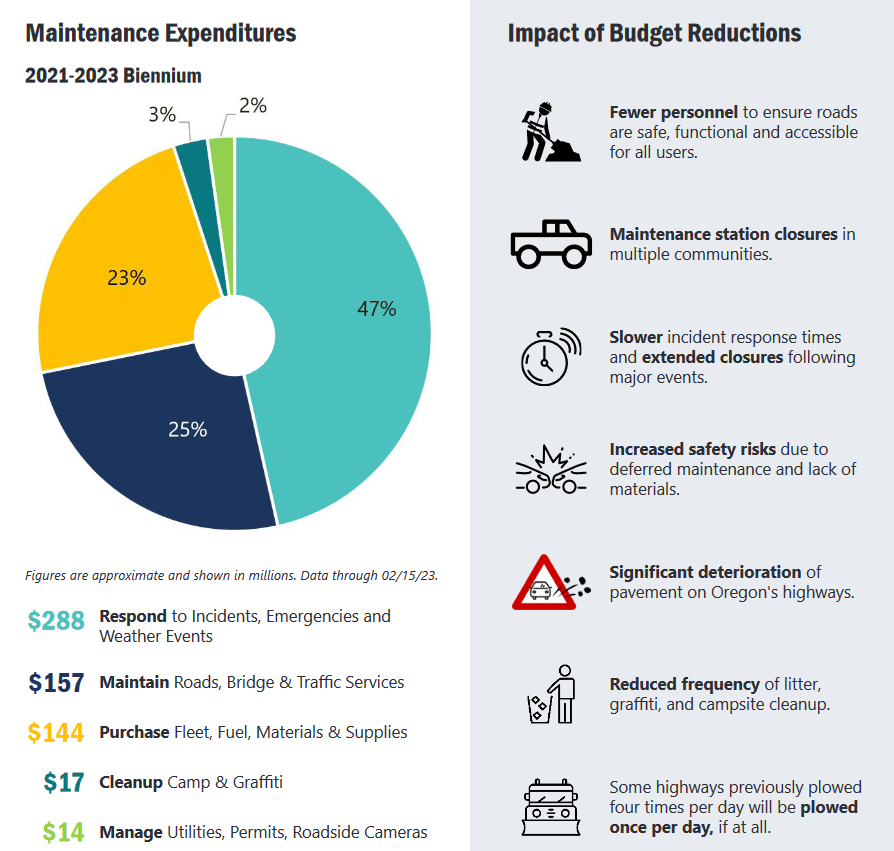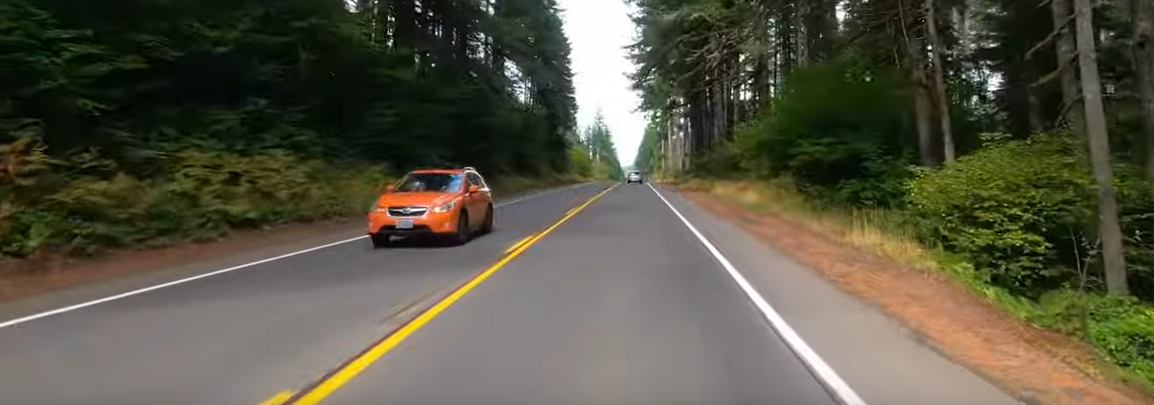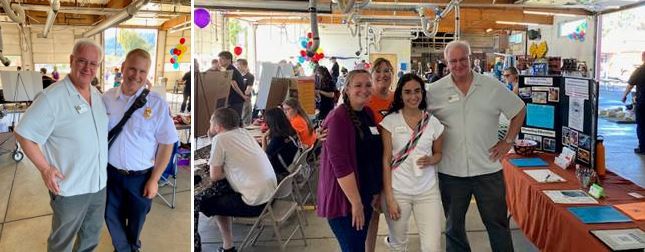By Representative David Gomberg, House District 10
10/9/2023
Hello Neighbors and Friends,
Oregonians celebrate Indigenous Peoples Day October 9, for the third time since the holiday was officially recognized in 2021.
Indigenous Peoples Day, the day previously celebrated in Oregon as Columbus Day, is meant to honor the fact that Native Americans were here long before Christopher Columbus ever came to the Americas.


You can learn more here about the history and heritage of the over 30 bands, originating from Northern California to Southern Washington that became the Confederated Tribes of Siletz.
Federal offices and courts will be closed. Many banks are closed. U.S. Postal Service offices will be closed and there is no regular mail delivery. Most school districts will be open.
In 2021, the Oregon State Legislature voted to adopt Indigenous Peoples Day and in doing so, joined 10 other states in recognizing the significant contributions that Native Americans have made to the U.S. — and more specifically, the contributions of Oregon’s nine federally recognized tribes to the culture of this state.
Take some time today to expand your understanding of the history of our land and the peoples and cultures that thrived here. You can learn more here about the history and heritage of the over 30 bands, originating from Northern California to Southern Washington that became the Confederated Tribes of Siletz.
|
|
As I travel our large and diverse district, I often hear from folks about the declining state of our roads and bridges. And of course, since I’m driving those roads and crossing those bridges myself, I’m seeing the problems firsthand.
I don’t have good news about our highway maintenance and improvements. But I can, at least, give you a sense of what the problem is.
In Oregon, the majority of our funds for day-to-day operations and maintenance of our roads come from the gas tax. Because of increased vehicle fuel efficiency and increased numbers of hybrid and electric vehicles, that tax revenue is declining. At the same time, we’re facing increased costs for inflation, labor, and materials. ODOT now reports that, despite their very best efforts over the past few years, the only way to further reduce costs and live within their budget is by reducing services. These reductions have already started and will become increasingly visible and tangible in the coming months.
Businesses, communities, residents, and visitors depend on a safe, efficient, and reliable transportation system. ODOT maintains and operates this system, helping get people safely where they need to go. Over 60 million miles are logged on Oregon roads daily.
Whether it’s plowing snow, repairing potholes, helping a driver fix a flat on the side of the highway or keeping a bridge in good shape, maintenance and operations are critical to serving Oregonians.

System users – drivers, cyclists, freight haulers, and pedestrians – will continue to experience a reduction in the service ODOT provides. Without sufficient, reliable, and dedicated funding, this trend will only grow more severe.
We will see a reduction in maintenance and preventive work. ODOT will continue to mitigate these impacts, stretch every dollar, and develop creative solutions. This funding crisis will also eventually lead us to failing infrastructure, unserved communities, and unmet needs.
For the 2023-24 budget, ODOT has implemented a 5% cut across all programs funded with state dollars. Within maintenance, they have cut services and materials an additional 15% to account for inflation and reduced buying power.

Services are being reduced in three primary areas:
- Low-volume road maintenance.
- Roadside maintenance.
- Winter maintenance.
ODOT will mow, spray, and trim trees less often. This may decrease visibility and increase the risk of wildfire starts, wildlife collisions, and weed growth. They are removing litter less frequently so you can expect to see more debris along highways.
Additionally, they will reduce the use of overtime, reserving it for emergency events and storms. Overall, a reduction in proactive maintenance will result in an increase in potholes, pavement ruts, and plugged and failed culverts.
Here’s more bad news.
Revenue reductions mean reducing pavement maintenance for low-volume roads – highways averaging less than 3,000 vehicles daily.
Work is being deferred on pothole and chip seal projects, and repainting edge lines.
In our part of Oregon, roughly 30% of the state highways are low-volume roads. Drivers can expect rougher roads, with more potholes and deeper ruts. If conditions deteriorate enough, speeds may be reduced to give people more time and opportunity to navigate rough stretches of highway. Edge lines will fade over time, particularly around curves. Drivers will need to rely on the centerline for lane locations.
Reviewing statewide reports, I noted faded edge lines will not be restriped on the following highway segments:
- OR 22 from U.S. 101 to OR 18
- OR 229 from U.S. 101 to Siletz
- OR 180 from Eddyville to Blodgett.
- OR 34 from Philomath to U.S. 101.

Reducing pavement maintenance and eliminating edge line restriping on low-volume roads allows crews to address critical maintenance activities on primary routes.
Finally, this winter will see a reduction in the amount of sand and deicer applied to state highways. ODOT will focus efforts on key highways, hills, curves, and known trouble spots.
With fewer seasonal employees, crews will prioritize key routes, including I-5, U.S. 26, U.S. 20, OR 22, and OR 126. Crews will plow, and sand other highways, including OR 99 and OR 6. However, sanding and plowing will occur less often.
I encourage travelers to prepare for the possibility of extended delays and varying degrees of traction as they navigate roads. Extended closures and chain restrictions for areas outside the valley are likely. With smaller budgets for staff and the materials needed to plow, sand, and deice, the potential for traffic jams and crashes increases. Incidents will take longer to clear.
Travelers should carry a fully stocked emergency kit, including a phone charger, and refuel or recharge vehicles often.
So what are we doing about this problem?
Most states have long recognized that the growing fuel efficiency of gas-powered vehicles and the transition to electric vehicles would place pressure on gas tax revenues. As early as 2001, Oregon lawmakers created a panel known as the Road User Fee Task Force to explore fuel tax substitutes. None of the options are pretty.
We could subsidize fuel taxes with income taxes. Those dollars are already spread thin and taxing everyone for roads is contrary to the long-standing policy of asking people who use those roads to pay for them. On the other hand, we all benefit from good roads whether we drive them or not.
We could increase vehicle registration fees. That would land hard on vehicle owners who don’t drive much – like seniors. And it would miss revenue from visitors who use our roads but don’t reside here.
Tolling. Ugh. No one likes the idea of tolling. But it does focus on road users including those pesky tourists.
Finally, one of the most discussed options is a tax based on vehicle miles traveled (VMT), an option that would collect revenue from drivers whether they buy gasoline or not. This again reaches road users but only those who reside in Oregon. It lands harder on rural residents who drive further to work, school, or shop. And I’m hearing plenty of pushback from people who don’t want the state tracking how much they drive or worse, where they drive.
The bottom line is that something will soon need to change. The likely outcome will be a combination of these options and possibly others. Stay tuned!
|
|
As I said, I’m hearing plenty from people who don’t want the state tracking where or how much they drive. I get it! But I need to tell you that that car has already left the garage!
I just finished a really creepy podcast at Malwarebytes “Lock and Code”. A team of researchers at Mozilla which has reviewed the privacy and data collection policies of various product categories for several years now in a series called “Privacy Not Included,” recently turned their attention to modern-day vehicles, and what they found shocked them. Cars, to put it bluntly, are a privacy nightmare.
When you think of the modern tools that most invade your privacy, what do you picture?
There are the obvious answers, like social media platforms including Facebook and Instagram. There are email and “everything” platforms like Google that can track your locations, your contacts, and, of course, your search history. There’s even the modern web itself, rife with third-party cookies that track your browsing activity across websites so your information can be bundled together into an ad-friendly profile.
But here’s a surprising answer with just as much validity: Cars.
Our car already tracks where we drive. According to the team’s research, Subaru passengers allegedly consent to the collection of their data by simply being in the vehicle. Volkswagen says it collects data like a person’s age and gender and whether they’re using their seatbelt, and it can use that information for targeted marketing purposes. Nissan and Kia say they can collect information about consumers that can even log – get this – “sexual activity”!

Even our cars are collecting data on us.
“What really creeps me out [is] they go on to say that they can take all the information they collect about you from the cars, the apps, the connected services, and everything they can gather about you from these third party sources,” researcher Jen Caltrider said, “and they can combine it into these things they call ‘inferences’ about you about things like your intelligence, your abilities, your predispositions, your characteristics.”
Listen and learn about the data that cars can collect, how that data can be shared, how it can be used, and whether consumers have any choice in the matter.
|
|
Legislative leaders are forming a committee to drill into problems with Oregon’s addiction crisis amid heavy criticism of the state’s landmark drug decriminalization law and the threat of a well-funded ballot measure campaign to undo key parts of the law.
Senate President Rob Wagner and House Speaker Dan Rayfield said in a news release that the committee of House and Senate members will look at what law enforcement needs to keep cities and rural areas safe and the availability of treatment services to help those struggling with alcohol or drug abuse.

Senator Kate Lieber (D-Beaverton) and Representative Jason Kropf (D-Bend) will co-chair a new committee on Oregon’s addiction crisis.
Wagner and Rayfield nominated eight people to the committee, including health care, judicial leaders and party leaders: Senate Minority Leader Tim Knopp, R-Bend; Rep. Rob Nosse, D-Portland and chair of the House Behavioral Health and Health Care Committee; Sen. Floyd Prozanski, D-Eugene and chair of the Senate Judiciary Committee; Rep. Jason Kropf, D-Bend, chair of the House Judiciary Committee; Republican Reps. Christine Goodwin of Canyonville; and vice-chair of the House behavioral health committee and Kevin Mannix of Salem; Democratic Rep. Andrea Valderrama of Portland; and Senate Majority Leader Kate Lieber, D-Beaverton.
Oregon is experiencing a soaring number of fatal overdoses—nearly 1,400 last year—and many blame Measure 110, the drug decriminalization law voters passed in 2020. A new study reports that decriminalization is NOT the cause of an increase in overdose deaths.
You can also listen to comments on OPB’s Think Out Loud.
|
|
The Oregon Ocean Science Trust (OOST) is seeking volunteers committed to stewardship of Oregon’s ocean and coastal resources to join the seven-member OOST. Duties of this board include promoting peer-reviewed, competitive research and monitoring that leads to increased knowledge and understanding of Oregon’s ocean and coastal resources. The State Land Board appoints the five voting members of the OOST and is currently accepting letters of interest for multiple open seats.
 |
In establishing the OOST, the Oregon Legislature created an opportunity for our state to understand how our ocean is changing and to help ensure a thriving coastal environment and economy for future generations. The Trust works to connect the many ways ocean science matters for Oregon, support science Oregon can count on, and invest in essential ocean research for a thriving environment and economy.
- Members must be residents of Oregon.
- Members must have not less than five years’ experience in competitive granting, marine science, foundations or fiscal assurance.
- Members are appointed to four-year terms but serve at the pleasure of the State Land Board. The OOST generally meets the first Wednesday of the calendar quarter, either virtually or at the Oregon Department of State Lands offices in Salem.
For more information, visit www.oregon.gov/dsl/OOST. To be considered, please submit a letter of interest via email no later than Tuesday, October 10 to Linda Safina-Massey at
Linda.Safina-Massey@dsl.oregon.gov.
|
|
Last week I attended the State Advisory Council meeting for the Oregon Small Business Development Center (SBDC) Network.
I’m an SBDC fan! They offer free counseling, support, and networking for small businesses and potential new small businesses. They turn ideas and dreams into new enterprises. And they help create new jobs – about 2000 a year – in all corners of Oregon.
I continue to believe that the SBDCs are the best economic development “bang-for-the-buck” in Oregon. And I have worked in Salem to get them more bucks to help them pay for even more bang. As a result of those efforts, something remarkable happened last week.
The SBDC network presented an award. Now, they didn’t give the award to me. Instead, they gave the award to a deserving recipient in my name.
It is an honor, humbling, and a bit embarrassing to have someone receive an award and have my name on their award.

The first pioneers were the explorers and scouts. The second pioneers were the settlers. And the third wave of Oregon pioneers were the merchants and entrepreneurs. This year, the Third Pioneers Award was presented to Andrea Testi of Treasure Valley Community College.
|
|
My Saturday schedule included stops in Philomath, Waldport, and Lincoln City. It was a typical day in my “part-time” legislative job.
 |
Visiting the Philomath Fire Department Open House and Health Fair Saturday.
Speaking of the SBDC, I’ll be stopping by their Restaurant Small Business Management program on Monday where some of the leading restaurants on the central coast will be gathered. Wednesday I’m meeting with mayors from Lincoln County. Thursday I have a legislative workgroup considering how we compensate small farmers for elk and deer damage, a meeting of the Commission on Senior Services, will lunch with some good folks who bid on a meal with me to benefit the Newport Symphony, and then will address the Emerald Valley Electric Vehicle Association on the future of road improvements and costs in Oregon. Friday I’ll be at the Newport Chamber Adopt-A-Dog lunch and then join the Right to Read conversation in our Lincoln County Schools.
Be sure to check out the Solar Eclipse on Saturday. Susie and I sure will! And next Monday I scoot to Astoria for the People’s Coast Summit.
There is always lots going on across our district and region.
|
|
email: Rep.DavidGomberg@oregonlegislature.gov
phone: 503-986-1410
address: 900 Court St NE, H-480, Salem, OR, 97301
website: http://www.oregonlegislature.gov/gomberg

